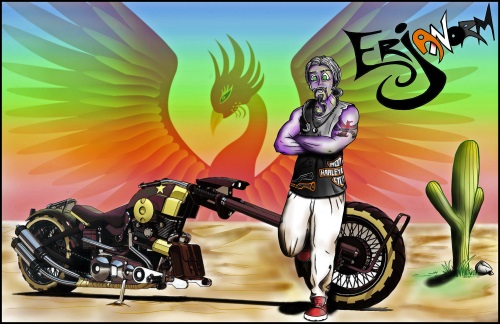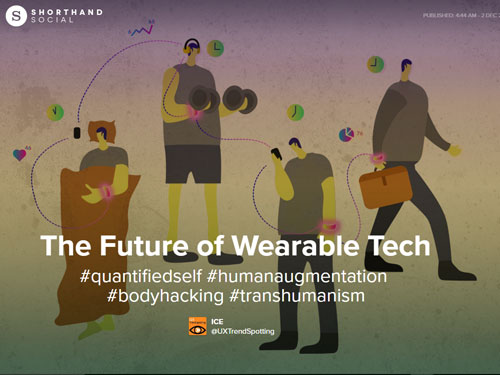
Wearable technologies first came in, in a smaller form, as more-convenient-than-a-smartphone-sized gadget. The Apple Watch and the Fitbit being the most commonly used wearables, followed by some wearable devices that are successful in the medical industry, such as SugarBEAT, a skin patch for diabetics. Almost any data emitting from the human body can be monitored. Owlet is a boon to parents who want to monitor their baby's heartrate and oxygen levels while they sleep. Tracking of various elements, number of steps, heartbeats per minute, whether a patient has eaten their next meal, blood pressure count, etc. are all possible data that can be collected, examined and analyzed for feedback from a wearable device.
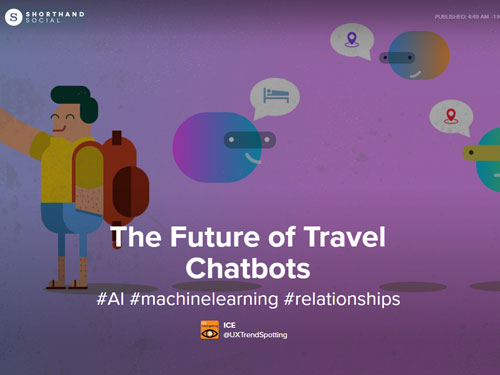
Move over apps, and say hello to travel chatbots. Travel agents, airlines, and hotels are all introducing chatbots who are knowledgeable, accurate and have a vast amount of information, while having a good conversation with you.
They can plan trips within your budget and also use NLP (natural language processing) to recognize your specific query "weekend getaway from London" or “music festival in Ibiza.” The feeling of having a virtual assistant, who really cares about modifying your budget and itinerary and giving you the best deals, is only possible because we are moving from apps to conversational products.
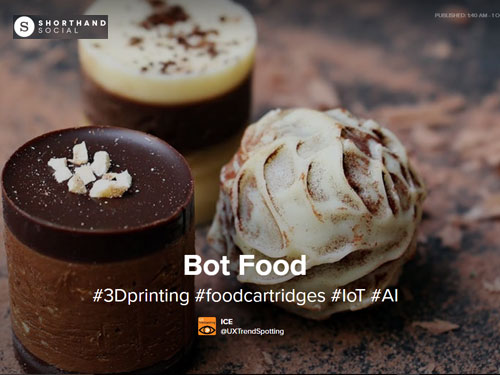
While 3D printing is becoming increasingly accessible to us, the printing of food as well as its connection to our food apps, fitness devices and medical records is a future not far away. Bot food will serve different purposes in the future - it will make its way into our homes and feed a vast population on Earth as well as astronauts in space.
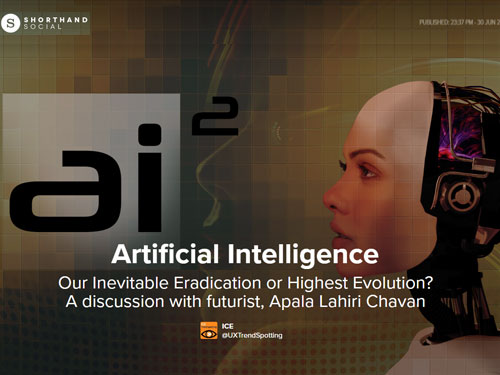
Our Inevitable Eradication or Highest Evolution? A discussion with futurist, Apala Lahiri Chavan
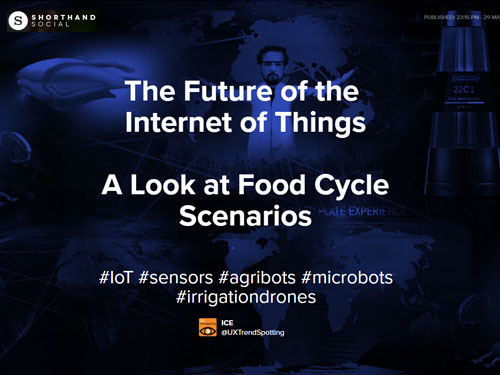
As Ivan sits at his IoT Headquarters in California, he and his team plan out the entire food cycle for their exclusive brand of organic tomato sauce, which are the only patented organic seeds for tomatoes on Earth in the year 2050. Using a host of connected devices, sensors, bots and drones, Ivan and his team are plan a farm-to-plate experience for their premium customers. Production, post-harvest, processing, distribution and consumption - are all controlled using the Internet of things to prepare the most nutritious and connected tomato sauce.
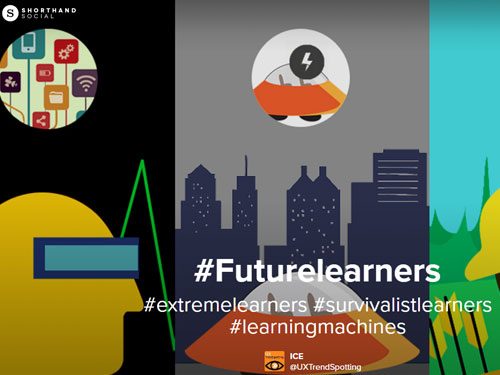
WHAT PERSONAS MIGHT HUMAN AND MACHINE LEARNERS FALL UNDER BY THE YEAR 2050?
We live in a connected world, where tweeting to thousands on Twitter gives us a dopamine rush, dating is algorithm-based, and proximity doesn't mean intimacy any more.
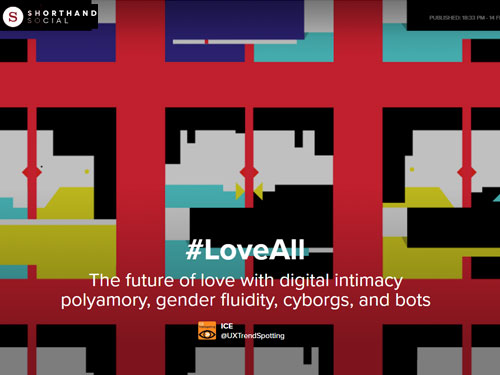
The future of love with digital intimacy polyamory, gender fluidity, cyborgs, and bots
We live in a connected world, where tweeting to thousands on Twitter gives us a dopamine rush, dating is algorithm-based, and proximity doesn't mean intimacy any more.
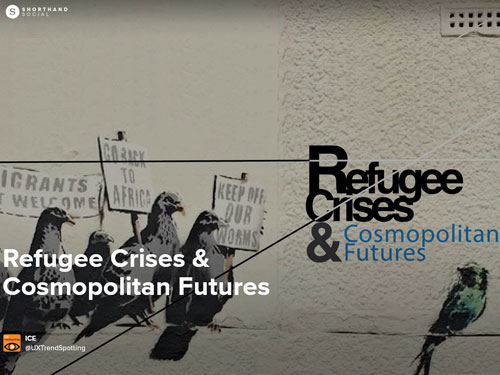
Refugee Crises and Cosmopolitan Futures
What if we didn't think of refugees as temporary, anomalies, and aberrations, but products of the way in which our very world is organized—both the exception and the rule?
What if we didn’t look at refugees as a sign of our broken times, but as prompts to a possible future?

Designing for Martians – people and environments in 2040
Check out our report on Designing for Martians in 2040, where we explore what new planetary environments might look like through the lenses of future professionals in the space-travel industry. We hope this gives insights into what designers will need to consider in order to be space-ready. #FutureOfSpaceTravel

The Future of Work
The potential unemployment owing to automation and improvements in ICTs is likely to be more drastic than earlier rounds of automation. Will people be redundant at the workplace? Is this likely to lead to unemployment and strife? Or can we use this opportunity to explore more art, travel, have more fun, in short be more human?

UX and Design Trends for 2016
Trend spotters at the Institute of Customer Experience (ICE) are always on the lookout for innovations that are defining/changing the way people perceive products, brands, experiences and design. This year, after reading several articles and researching innovations on the radar and trends that will change the course of action in the coming years, we shortlisted these top five trends.
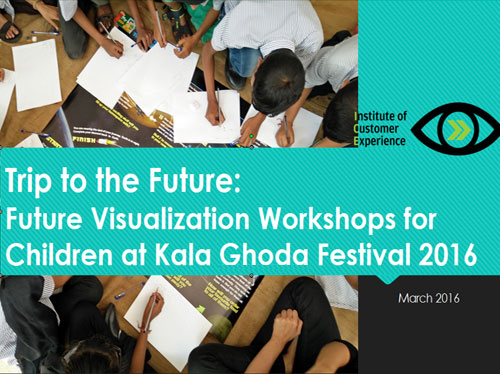
Trip to the Future
At Kala Ghoda Arts Festival 2016 held in Mumbai, we had an opportunity to conduct two playshops—one for an NGO called Akanksha and the second for the KGAF 2016 festival children. The responses we received were intriguing and actually point to current trends in 2016, indicating the directions in which technology will evolve in the future.
- What is the Singularity?
- How is it predicted?
- What are its implications?
- What does it mean for human evolution?
- What when it happens: Utopia or doom?
- Beginnings of the Singularity
- Questions that arise
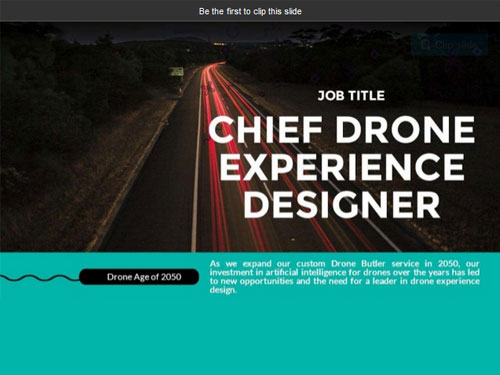
Chief drone experience designer
Drones are already a buzzword, and the future we can imagine consists of a ‘life with drones’, as they are due to play a big role in several businesses such as medical care, photography, delivery, adventure sports, and so on.

The Technological Singularity
The Technological Singularity is a future point in time when technology will rapidly improve itself to surpass human intelligence, changing human life as we know it. In this report, the following topics are covered:
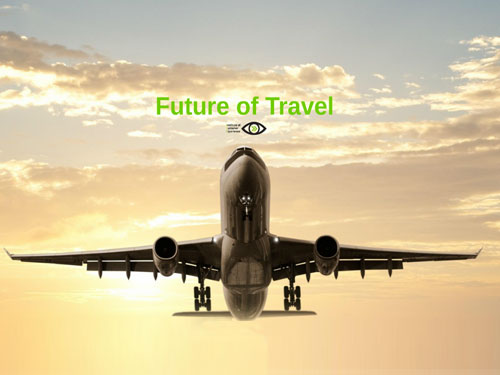
Future of Travel
In this report, we explore far reaching connections between politics, economy, society, technology and environment with travel. It’s not just the trends but their interplay that we have based our speculative scenarios and product visualizations for the Future of Travel.

Smart homes for elderly care in india
As various smart home technology companies spring up in India, in this report, we explore how smart homes can benefit the elderly by listing the cultural dimensions of the elderly in India and taking a closer look at a model for elderly care in Norway for inspiration.
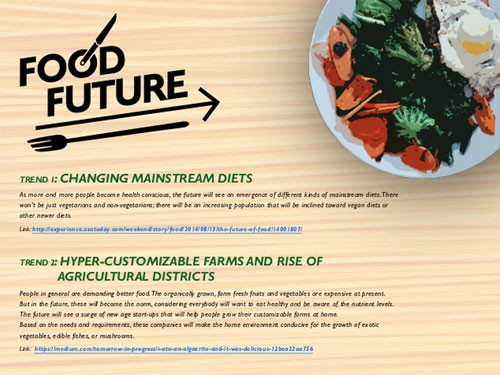
Food future
How will food and everything related to food will look like in future? What role will technology and innovation play in making people more conscious about what they eat?

Survey for International Longevity Day
Survey conducted on International Longevity Day, October 1st, 2015 with responses of ~30 participants across the world.
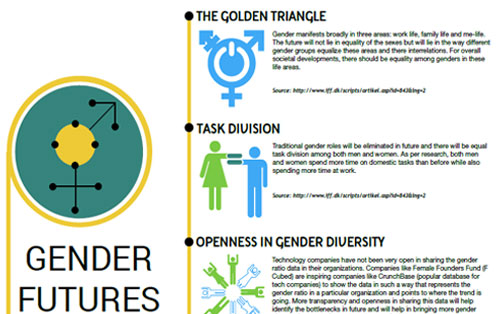
Gender Futures Insight Chart
Gender equality is fi rst and foremost a matt er of equality between family and working life and hence of equalizing the qualities and values provided by the family with those provided by work.”
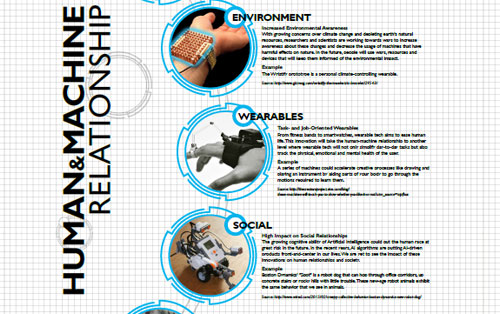
Human-Machine Relationship Insight Chart
HEALTHCARE
Healthy Organs On-the-Go
Open-access to organs for patients waiting for an organ transplant will be easily available with the advent of 3D bio-printing. These 3D bio-printers will help in creating custom-made organs and body parts.
Example
3D bio-printers will create custom-made organs and body parts using stem cells, proteins and other synthetic substances similar to the human collagen.
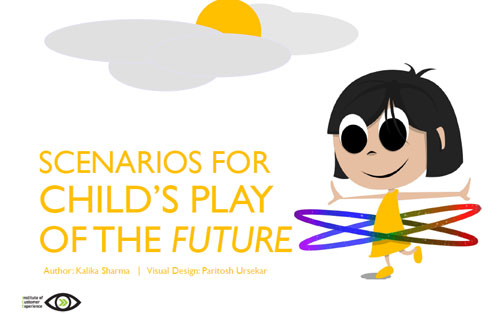
Scenarios for Child’s Play of the Future
Toy-Ro, an intelligent, self-adapting toy, is born on the day Remy 3Dprinted it as a 3-year-old so that she could make drawings on any surface. Then, Toy-Ro simply takes the shape of any surface Remy puts it on for drawing, and gets to know Remy, giving her inspiration with colors and patterns.
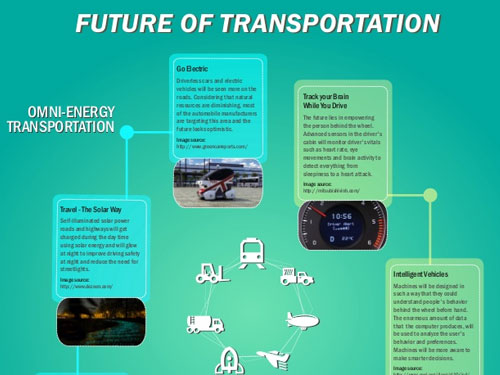
Future of Transportation
What is the future of transportation? We at the Institute of Customer Experience share our insights by analyzing the trends in technological advancements in transportation, which you can find on our Facebook page: facebook.com/UXTrendspotting

Future of Love and War
Love is a very complex emotion to decode. Or is it?
Machines and their relationship with humans have been explored in great detail. However the impact of machines on the future of love and the connection between technology and emotions seem more pertinent now than before.
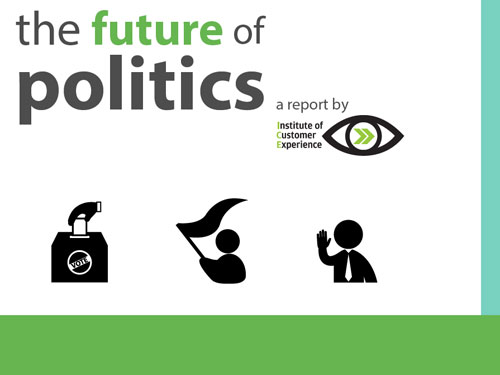
Future of Politics
How will the future of politics and political campaigning look like? Who will be the heroes in the future political battles? Where will the battle take place - on the streets or in the virtual world? What weapons will the future political parties use?
In this report, the Institute of Customer Experience raises many of such questions and presents possible scenarios that might become a reality given the present trends.
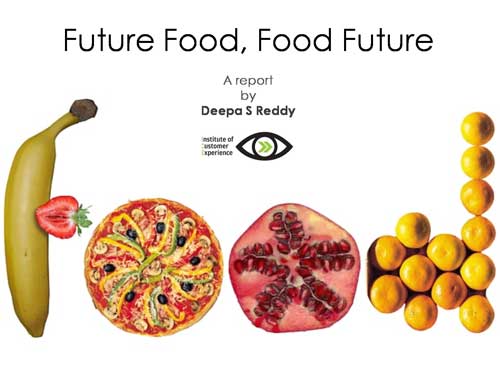
Future Food, Food Future
By the year 2050, the world’s population is projected to swell to 9 billion. 80% of us will be urban-dwellers. Demand from developing countries for a wider range of foods is on the rise. Experts estimate that we will need new farmland larger than the size of Brazil to produce enough to meet the demands of growing populations.
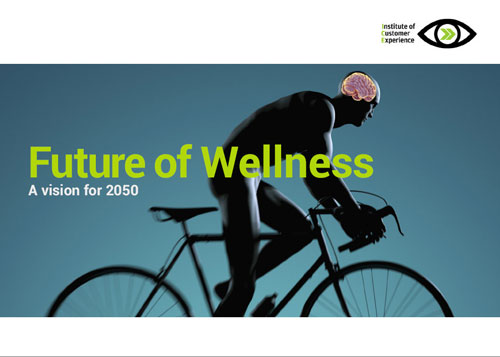
Future of Wellness - A vision for 2050
Wellness, in today’s context, is much more than diagnosing and curing poor health or diseases. It is a multidimensional and holistic state of being that is conscious, self-directed, and constantly evolving. Trying to make sense of wellness in a world of rising healthcare costs, shortage of wellness professionals, and technological advances in everything from computing to genetics, gives rise to several pertinent questions.
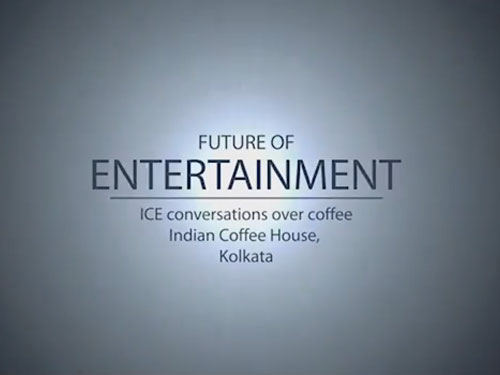
First in the series 'Cities and the Future'
Does your vision of the future depend on the city you live in?
Do cities have their own 'persona' that influences its citizens?
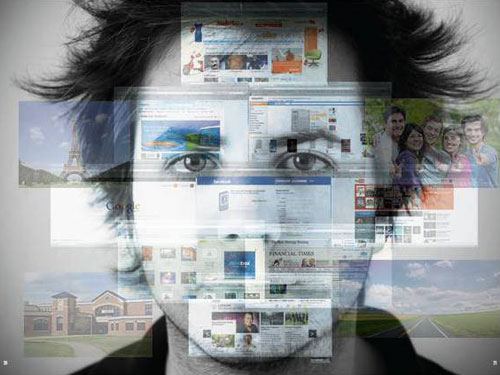
How Lifelogging Transforms Us All
Lifelogging is the practice of tracking personal data generated by our own behavioral activities in continuous digital streams. As it is slowly becoming mainstream, it raises a lot of intriguing questions and thoughts.
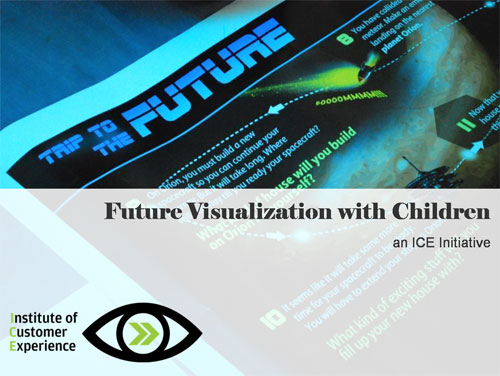
Future Visualization with Children
As part of Institute of Customer Experience, we are constantly on the look out for opportunities that give us an insight into the future of things. We wanted to explore the concept of “beginner’s mind” which is said to be an attitude of openness, eagerness and lack of preconceptions and realized that it was the mind of a child that we wanted a peek into.
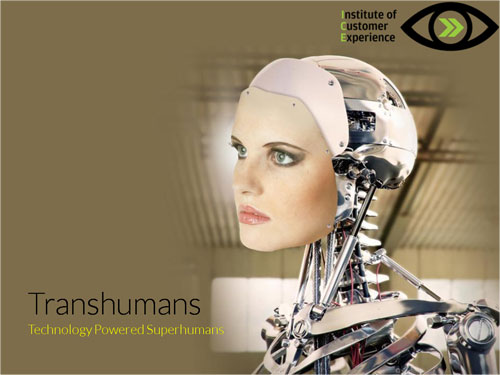
Transhumans:
Technology Powered Superhumans
Transhumanism is the belief or theory that the human race can evolve beyond its current physical and mental limitations by means of science and technology. The more we explored this subject, the more we got fascinated to see how people are riding on the current era technologies to surpass the capabilities of human body. If the current explorations in transhumanism are anything to go by, then, we believe the future will be very exciting!

A Compilation of Interesting Crowdfunded Projects
Crowdfunding web sites are Internet platforms that support the collective cooperation, attention and trust by people who network and pool their money and other resources for projects initiated by other people or organizations.
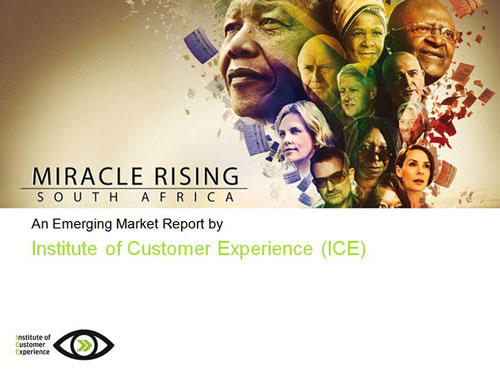
South Africa:
An
Emerging Market Report
The diversity of South Africa is on one hand a treasure that should be preserved and people still do recognize its importance and carry forward their cultural values. On the other hand, the very same diversity is a challenge for policy makers, marketers, advertisers, government and other institutions that want to reach out to greater masses and those who look for scalability.
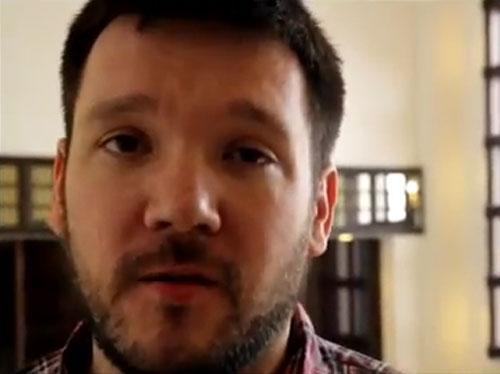
UX Futurists Conference 2013 -
Chapter 1: The Future is Mobile
ICE (Institute of Customer Experience) hosted its first conference - UXFC 2013 Chapter 1 : 'The Future is Mobile' at 'The Trident Hotel' on the 15th of February. This platform was used to connect and discuss the infinite possibilities mobile phones have to offer.

Three laws of user
experience
Three laws of user experience: Apala Lahiri Chavan at TEDxGolfLinksPark

Apala Lahiri Chavan, CEO (ICE)
on the future of Global UX
Where is UX headed in the near future and in the long term? What are the areas and trends UX professionals need to look into, and be aware of? What is the apt framework for delivering UX globally? Watch Apala Lahiri Chavan, the CEO of the Institute of Customer Experience, as she talks about the future of global user experience.
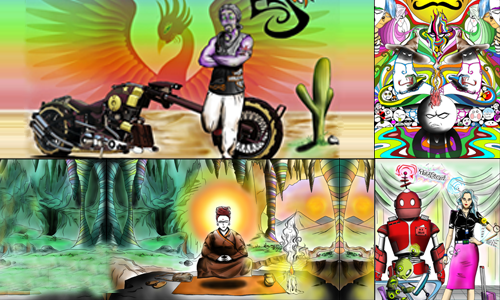
The Future of Global UX -
A Story
Rebellion?
The United Worlds conference had just concluded a very important session and it was the first time in 30 years that there was overwhelming consensus about the most important action items.

Future of
Global Customer Experience
This short video teaser introduces the Institute of Customer Experience (ICE) through a series of thought provoking questions about UX in our future world. Visit the ICE Facebook page UX Trendspotting http://facebook.com/UXtrendspotting
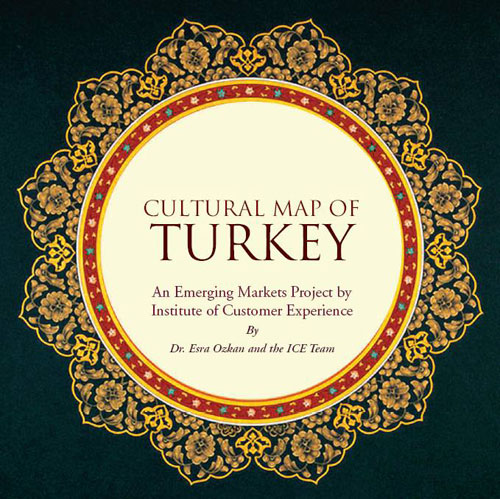
Emerging Markets:
Report on Turkey
Waking up early one morning, I look out from our hotel room. The sea is the same color as the sky: a grayish blue. Giant ships and tankers are gliding quietly through the Bosphorus into the Marmara Sea carrying goods and oil.







